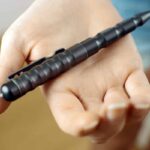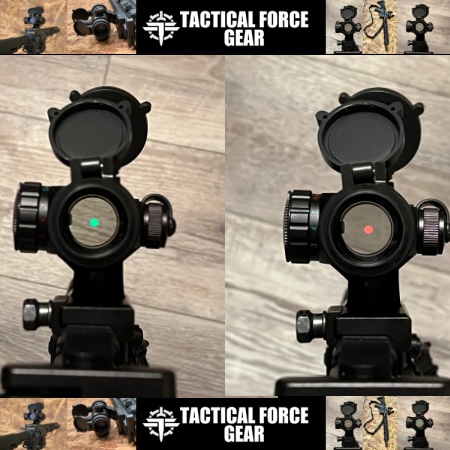If you’re looking for a reliable hunting and distance shooting round for an AR-platform rifle, the 6.5 Grendel and the .308 Winchester should be on your list.
Initially, these cartridges seem vastly different. Why bother comparing two rounds that are so dissimilar in size and weight? For many reasons.
To begin, both of these rounds are fired from the popular AR platform. For the 6.5 Grendel, the typical rifle is an AR-15, while the .308 is the ubiquitous round for the larger AR-10.
Most hunters and shooters are familiar with the .308 Winchester. It is, after all, a classic American round with a heritage dating back to the 1950s. The 6.5 Grendel, on the other hand, is less familiar; casual shooters and hunters may not have been introduced to this cartridge. (Even though it dates back to 2003.)
Classic .308 or Modern 6.5? Making the Choice
Now that we understand the performance capabilities, we can clearly identify the advantages of each cartridge…
Advantages of the 6.5 Grendel:
- Lighter recoil increases the chances of comfortable and accurate shooting.
- Smaller, lighter bullets are better for varmint and coyote, especially when preserving pelts.
Advantages of the .308 Winchester:
- Wider, heavier bullets makes it a more capable deer cartridge.
- Excellent downrange energies create superior terminal ballistics.
- A readily available round with numerous product options.
- 6.5 Grendel vs .308 Winchester: First Impressions
Size, Shape, Weight, and Other Physical Differences
|
AR-15 semiautomatic rifles |
AR-10 and some bolt-action rifles |
There are clear size, shape, and weight differences between the two. While the bullet diameters are different, the most visible physical difference is the overall length. (And, for that matter, case length.) Hold the two rounds in your hand and it’s easy to see the difference; the .308 is clearly longer and has a thicker case.
It also has a wider caliber, which allows it to pack heavier projectiles. The 6.5 Grendel maxes out at 130 grains, while the .308 starts around 110 and goes as high as 185 for typical products. If you can find them, there are even some 260-grain .308 rounds, but these are rare.
Market Conditions: Pricing and Availability

For pricing, these rounds are fairly similar. Currently (prices are always changing), both of these rounds cost about $0.80 to $0.90 per round for high-volume FMJ ammo. Users can easily spend $1.50 to $2.00 per shot on either cartridge, although the .308 has options as elite hunting rounds costing $3.00 per boom.
.308 ammo is a long-established cartridge with more options for users. When this article was written, we carried 13 options for 6.5 Grendel ammo. At the same time, we carried 84 choices for .308 Winchester. You’ll see this same trend on store shelves and other online stores. Your nearest ammo shelf will likely have a smattering of .308 options; whether or not they carry the Grendel is less certain.
6.5 Grendel vs .308 Win: Performance!

What ultimately matters to users is performance. To identify the performance characteristics of these two rounds, we selected five products from each cartridge. We purposefully chose light, medium, and heavy loads from each cartridge, giving us a clear picture of the overall performance capabilities.
To start, let’s see how they fared for velocity…
Velocity
|
90-grain Varmageddon (Nosler) |
||||||
|
100-grain |
||||||
|
115-grain |
||||||
|
120-grain |
||||||
|
130-grain Premier Match (Remington) |
||||||
|
110-grain |
||||||
|
130-grain |
||||||
|
150-grain |
||||||
|
165-grain |
||||||
|
180-grain |
||||||

Although the .308 packs heavier bullets (which often translates to slower speeds), the larger case launches the projectiles with greater velocity. At the muzzle, the difference is (on average) about 220 fps; by 500 yards the difference has narrowed to 100 fps, a possible sign of the 6.5 Grendel’s efficiency and ballistic coefficient.
If you want high muzzle speeds, light .308 rounds are the top choice. But downrange, heavier rounds maintain higher speeds.
To see how each cartridge stacks up to the advertised velocities, we fired a five shot string of each. For .308, we used an AR-10 with an 18″ barrel and for the Grendel, we used an AR-style rifle with 16″ barrel. Note: we realize the barrel lengths don’t make this a “fair” comparison but it does allow you to see what sort of velocities you can expect in a “real word” rifle rather than the 24″ barrels used in manufacturer data.
|
.308 – Winchester 147 Grain FMJ |
6.5 Grendel – Nosler 129 Grain ABLR |
|
As you can see, the 6.5 Grendel holds its own, but often lags behind the .308 in terms of velocity.
Energy
|
90-grain Varmageddon(Nosler) |
||||||
|
100-grainELD-VT V-Match(Hornady) |
||||||
|
115-grain TAC-TX BT(Barnes) |
||||||
|
120-grainFusion MSR(Federal) |
||||||
|
130-grain Premier Match(Remington) |
||||||
|
110-grain FB Tipped Varmageddon (Nosler) |
||||||
|
130-grainVOR-TX TTSX BT(Barnes) |
||||||
|
150-grainInterLock SP(Hornady) |
||||||
|
165-grainExergy Blue(Sellier & Bellot) |
||||||
|
180-grain Fusion Bonded SP(Federal) |
||||||
With slightly faster speeds and heavier bullets, the average energy of the .308 is significantly higher than the 6.5 Grendel. The velocities were close, but the .308 takes a resounding victory in overall power.
The most powerful Grendel logs a muzzle energy of 1,801 ft-lbs, while the weakest .308 Winchester sits at 2,423 ft-lbs. The difference in muzzle averages is about 1,000 ft-lbs, although the gap is narrowed downrange.
Trajectory
|
90-grain Varmageddon(Nosler) |
||||
|
100-grainELD-VT V-Match(Hornady) |
||||
|
115-grain TAC-TX BT(Barnes) |
||||
|
120-grainFusion MSR(Federal) |
||||
|
130-grain Premier Match(Remington) |
||||
|
110-grain FB Tipped Varmageddon (Nosler) |
||||
|
130-grainVOR-TX TTSX BT(Barnes) |
||||
|
150-grainInterLock SP(Hornady) |
||||
|
180-grain Fusion Bonded SP(Federal) |
||||
Again we see a slight victory for the .308 Winchester. It shows less drop, although practiced shooters can easily make up the difference of a couple of inches. The lighter 6.5 Grendel rounds showed similar numbers, and there was plenty of overlap. Frankly, when comparing the Grendel and the .308, trajectory won’t be a driving factor in your decision.
Note: We left off the 165-grain Sellier & Bellot product, as the manufacturer does not provide zeroed-to-200-yards trajectory data.
Classic or Modern, We Have the Ammo You Need
Whether you need classic .308 Winchester ammo or you load the modern 6.5 Grendel, you’ll find the ammo you need right here. Visit our site and place your order for high-quality rounds at a price that won’t empty your bank account!
Read the full article here











